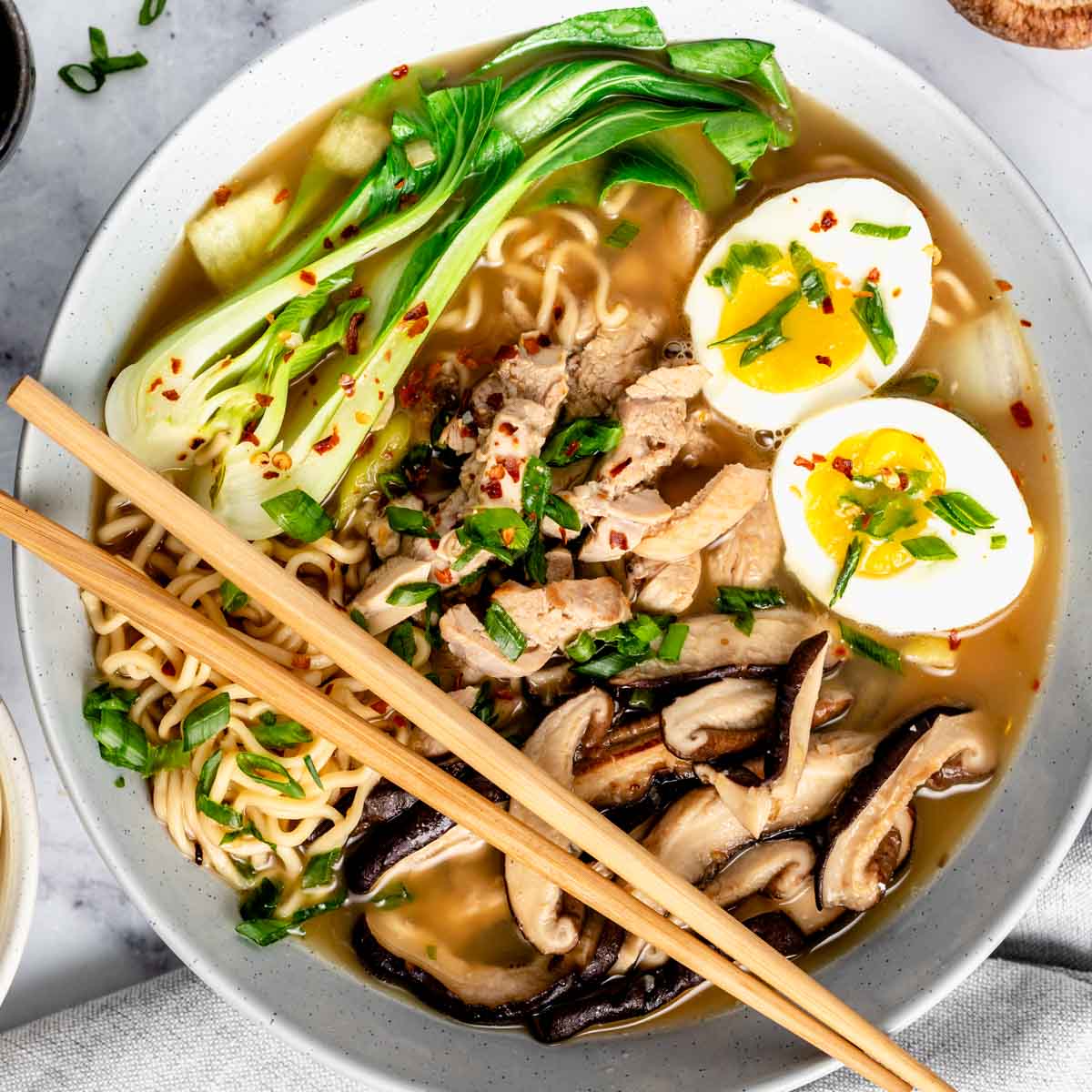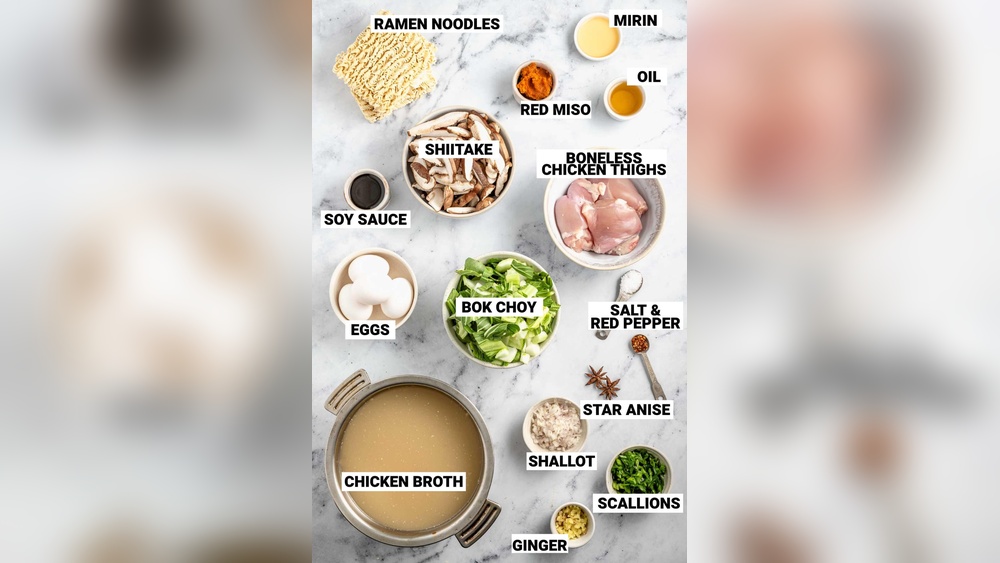If you love ramen and want to take your bowl to the next level, adding bok choy is a game-changer. But how do you cook bok choy for ramen so it’s tender, flavorful, and perfectly balanced with your broth and noodles?
You might wonder if you should blanch it, sauté it, or just toss it in raw. Getting it right can make all the difference between a good ramen and a restaurant-quality experience at home. In this guide, you’ll discover simple, effective ways to cook bok choy that keep its crunch and brighten your ramen bowl.
Ready to impress your taste buds and elevate your next meal? Let’s dive into the best methods to cook bok choy for ramen!
Choosing Bok Choy For Ramen
Baby bok choy is smaller and more tender than regular bok choy. It cooks faster and has a mild, sweet flavor. Regular bok choy is larger with thicker stalks and a stronger taste. Both types work well in ramen but offer different textures.
Choose bok choy with bright green leaves and firm stalks. Avoid leaves that look yellow or wilted. The stalks should be crisp, not soft or slimy. Fresh bok choy adds a nice crunch and flavor to your ramen.
| Type | Size | Texture | Flavor | Cooking Time |
|---|---|---|---|---|
| Baby Bok Choy | Small | Tender | Mild and sweet | Quick |
| Regular Bok Choy | Large | Crunchy | Stronger | Longer |
Preparing Bok Choy
Wash bok choy thoroughly under cold water. Dirt often hides between stalks and leaves. Gently rub each part to remove any soil. Drain well using a colander or towel.
Use a sharp knife for clean, even cuts. Cut bok choy lengthwise or crosswise depending on your recipe. Smaller pieces cook faster and fit well in ramen bowls.
Separate stalks from leaves. Stalks need more cooking time than leaves. Cook stalks first, then add leaves near the end. This keeps the texture perfect for ramen.
Cooking Methods For Bok Choy
Simmering in broth softens bok choy and blends its flavor with ramen. Add bok choy to the hot broth near the end of cooking. Let it cook for 2-3 minutes until tender but still bright green.
Blanching keeps bok choy crisp and fresh. Boil water separately and quickly drop bok choy in for 30 seconds. Drain well, then add to ramen just before serving or gently simmer in broth for a minute.
Sautéing or stir-frying gives bok choy a slight crispness and a richer taste. Heat a little oil in a pan on medium-high heat. Cook bok choy for 2-4 minutes, stirring often, until tender but still crunchy. Add it to the ramen bowl last.
Adding raw bok choy provides a fresh, crunchy texture. Simply wash and chop the leaves and stems. Place them on top of hot ramen just before eating. The heat softens bok choy slightly without losing crunch.

Timing Bok Choy In Ramen
Add bok choy to ramen broth during the last 2-3 minutes of cooking. This timing keeps the stalks tender but still crisp. The delicate green leaves cook faster and need less time, about 1-2 minutes. For a softer texture, cook the bok choy a bit longer, around 4-5 minutes, but avoid overcooking to keep its fresh flavor.
Blanching bok choy separately helps control texture. Boil water, cook bok choy for 1-2 minutes, then drain. Add to ramen just before serving. This method keeps the bok choy bright and crunchy.
| Cooking Method | Time | Result |
|---|---|---|
| Simmer in Broth | 2-3 minutes | Tender stalks, crisp leaves |
| Blanch | 1-2 minutes | Bright, crunchy texture |
| Sauté or Stir-Fry | 3-4 minutes | Lightly tender, slightly crisp |
Flavor Enhancements
Seasoning bok choy enhances its natural mild taste. Use soy sauce or sesame oil for rich flavor. A pinch of garlic powder or ginger adds warmth. Lightly season before cooking to keep freshness.
Combining bok choy with other ingredients creates a balanced ramen bowl. Pair with mushrooms for earthiness and tofu for protein. Add green onions for a fresh, sharp bite. These combinations bring out the best in your ramen.
Common Mistakes To Avoid
Overcooking bok choy makes it soft and mushy. It loses its fresh, crisp texture. Cook bok choy just until it becomes tender but still firm. The stalks take longer than the leaves. Start cooking the stalks first, then add the leaves later. This way, all parts cook evenly.
Uneven cooking happens when bok choy pieces are different sizes. Cut the bok choy into similar sizes for even cooking. Smaller pieces cook faster, causing some parts to be soft while others stay raw. Stir the bok choy gently during cooking to heat it all well. This keeps the texture balanced and tasty.
Serving Suggestions
Arrange bok choy neatly on one side of the bowl. This keeps the ramen visually appealing and easy to eat. Use the green leaves and white stalks to create contrast in color and texture.
Pair bok choy with proteins like soft boiled eggs, chicken, or tofu. These add flavor and nutrition to the dish. Place proteins opposite the bok choy for balance.
Add toppings such as scallions, mushrooms, or sesame seeds on top. This boosts taste and gives a nice crunch. Drizzle a little sesame oil for aroma.
| Protein | Toppings | Plating Tip |
|---|---|---|
| Chicken | Scallions, Mushrooms | Place chicken slices opposite bok choy |
| Soft Boiled Eggs | Sesame Seeds, Nori | Cut eggs in half, place on top |
| Tofu | Chili Flakes, Green Onions | Scatter toppings for color |


Frequently Asked Questions
Do You Cook Bok Choy Before Putting It In Ramen?
Yes, cook bok choy before adding it to ramen. Simmer, blanch, or sauté until tender but still crisp. Add at the end.
How To Cut Bok Choy For Ramen Noodles?
Cut bok choy by separating stalks and leaves. Slice stalks into 1-inch pieces and chop leaves roughly. Add to ramen near the end to keep texture.
How Is Bok Choy Supposed To Be Cooked?
Cook bok choy by simmering in broth, blanching, or stir-frying until tender but still crisp. Separate stalks and leaves for even cooking. Add to ramen just before serving to maintain freshness and texture. Avoid overcooking to keep its crunch and flavor.
How To Blanch Bok Choy For Ramen?
Boil water and submerge bok choy for 30-60 seconds to blanch. Drain well and add to ramen just before serving for a tender crunch.
Conclusion
Cooking bok choy for ramen is simple and quick. Cook the stalks a little longer than the leaves. Avoid overcooking to keep a nice crunch. You can simmer, blanch, or stir-fry the bok choy. Each method adds a fresh, tasty touch to your ramen.
Add bok choy just before serving for best texture. Enjoy your ramen with this healthy, flavorful green vegetable. Experiment and find your favorite way to cook bok choy. It makes ramen more delicious and nutritious every time.

Yes, working as , Food Blogger and Product Reviewer for last 6 years. Here you will get amazing deals for Smart kitchen products. I am your best source for the latest update in cooking trends. I provide insightful articles, reviews, and analysis on cutting-edge kitchen gadget. My mission is to empower readers with the knowledge they need to stay ahead in a rapidly evolving coking world. Join me as we explore the future of food technology and how it shapes our lives today and tomorrow.





